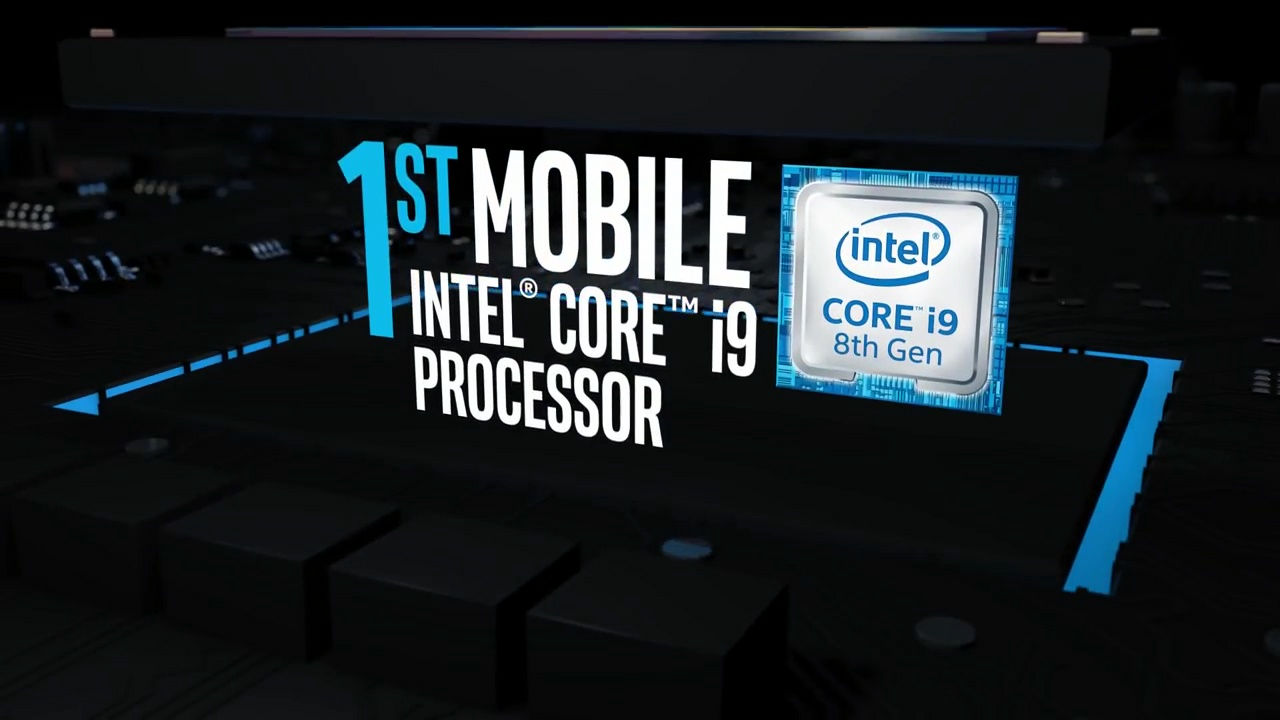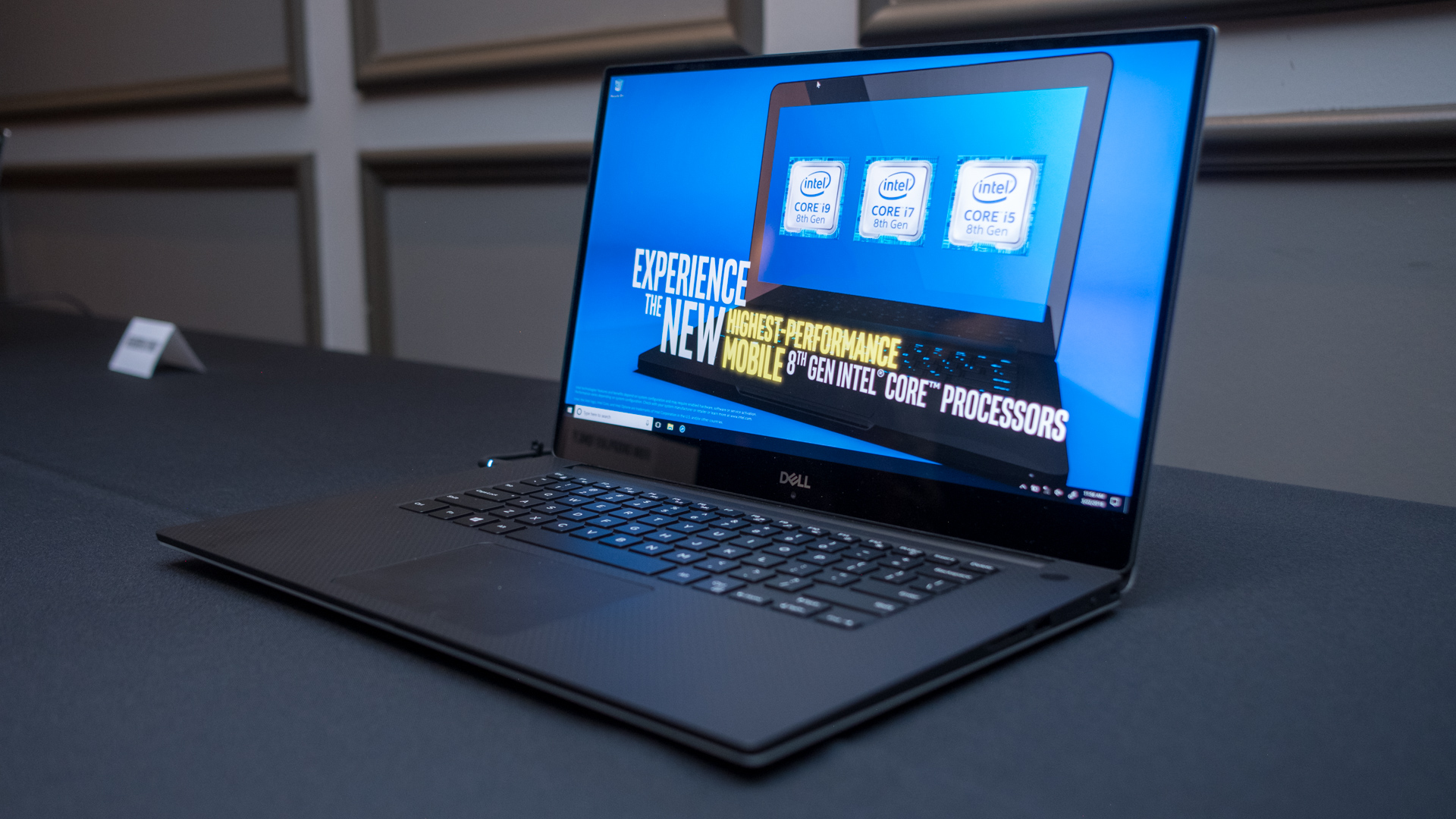
When we first heard of Intel’s H-series Coffee Lake processors for laptops, we had a hunch it would include some of company’s first hexa-core CPUs. But, we never expected Core i9 to make the jump to laptops.
On desktops, high-end processors, like the Intel Core i9-7980XE, have brought the highest-core counts we’ve seen on consumer chips and the greatest multi-core performance we’ve tested.
In similar fashion, the top-of-the-line chip boasts a six-core and 12-thread arrangement for the first time on a mobile part, with the addition of higher clock speeds up to 4.8GHz, thanks to its fully unlocked status. Intel claims that its Core i9-8950HK is the best gaming and content-creation laptop processor it has ever built. Even amongst its 8th generation H-series brethren, this top-end part is claimed to deliver at least 10% more performance than the second-most powerful Intel Core i7-8850H.
Of course, there’s always a greater story behind any legendary leap forward such as this, and Fredrik Hamberger, general manager of premium and gaming notebooks at Intel, is excited to tell all.
“We saw the demand from our highest-end enthusiasts for more performance,” Hamberger says, explaining the origins of the first mobile Core i9 processor. “They wanted something more, different and higher-end than just what we were scaling with our entire category.”
“So, we looked at that and we had an opportunity to squeeze a little more out of our process and by doing some unique things, like Thermal Velocity Boost.”

Going into overdrive
Just what is Thermal Velocity Boost (TVB) anyway? It’s basically a feature that allows Intel’s top-end processor to achieve an additional 200MHz of additional frequency on top its standard 4.6GHz Turbo Boost.
Get daily insight, inspiration and deals in your inbox
Sign up for breaking news, reviews, opinion, top tech deals, and more.
“By taking advantage of the fact that, at lower temperatures, you can actually achieve higher frequencies,” Hamberger explains, “we’ve done some tweaking to our process and microcode to enable an additional boost in frequency when the processor temperature allows. “
Like most of Intel’s Turbo Boost technology, Thermal Velocity Boost turns on automatically applies the 200 extra megahertz of additional frequency as long as a workload – such as a video encode or rendering 3D models – requires it and the chip is operating at 50-degrees Celsius or lower.
As Hamberger explains it, TVB is centered around burst workloads rather holding a sustained overclock for tasks such as gaming.
“As the part heats up, you might drop down to only 100MHz of additional frequency and when it reaches something above 70- or 80-degrees Celsius you might not get that any additional speed,” Hamberger says.
Still, you can expect the chip to operate at its guaranteed turbo boost frequency of 4.6GHz up to 100-degrees Celsius. Any hotter than that, and you’ll most likely have other problems on your hands.
Bringing desktop power to laptops
Following our talks with Intel, it is abundantly clear that the ultimate goal of its new Intel Core i9 chip is to bring the power of desktops to the laptop. The concept isn’t exactly new to the mobile space: over the years, we’ve seen plenty of manufacturers implement desktop processors into gaming laptops, such as the Origin EON15-X.
Intel, being the actual maker of the processors, wasn’t about to just ramshackle a desktop-level part into a notebook. Rather, it engineered a chip completely designed for mobile with a thermal design and power delivery that notebooks could support.
“We saw the wish for power and performance and that’s what we’re trying to deliver, giving them as much as we can in a mobile-friendly form factor,” Hamberger tells us. “You get that better form factor, battery life and tuning that you wouldn’t get with a socketed part in a notebook chassis.”
“If you look at what we did with our highest-end performing SKU. The Core i9 is on par with last year’s desktop chip.

For the most part, Hamberger sees musclebook – a new phrase Intel has coined for thicker workstations and gaming notebooks – users being able to take the full advantage of Core i9’s overclocking capabilities as they offer a higher level of cooling, allowing for TVB to kick in more often. That said, there will also be thinner laptops capable of supporting Intel’s highest-end chip, such as the Dell XPS 15.
“It’s also going to show up in the sub 20mm category that has thinness and greater battery life than six hours,” he says.
If you look at the history of silicon in computers, there’s always been a trickle-down effect, especially in Intel’s case. Intel Core i9, and the greater Core X series, brought server capability into a desktop format with megatasking.
Now, Intel Core i9 brings the performance of a desktop and server-borne megatasking to notebooks, all within the company’s first hexa-core processors for laptops. Here’s to hoping the trend continues and we see mobile CPUs with eight or more cores in the near future.
- Intel Core i9 could power some of the best laptops we've ever seen
Kevin Lee was a former computing reporter at TechRadar. Kevin is now the SEO Updates Editor at IGN based in New York. He handles all of the best of tech buying guides while also dipping his hand in the entertainment and games evergreen content. Kevin has over eight years of experience in the tech and games publications with previous bylines at Polygon, PC World, and more. Outside of work, Kevin is major movie buff of cult and bad films. He also regularly plays flight & space sim and racing games. IRL he's a fan of archery, axe throwing, and board games.
